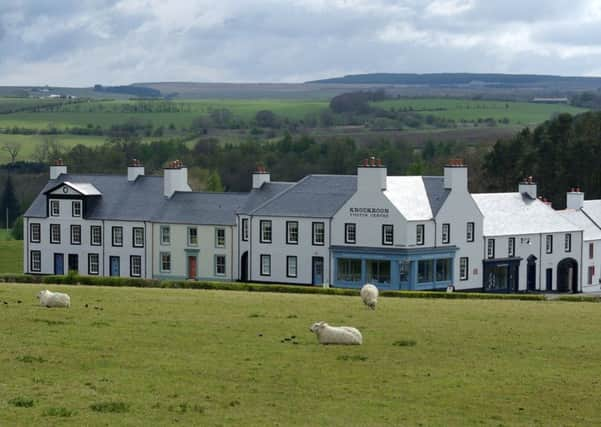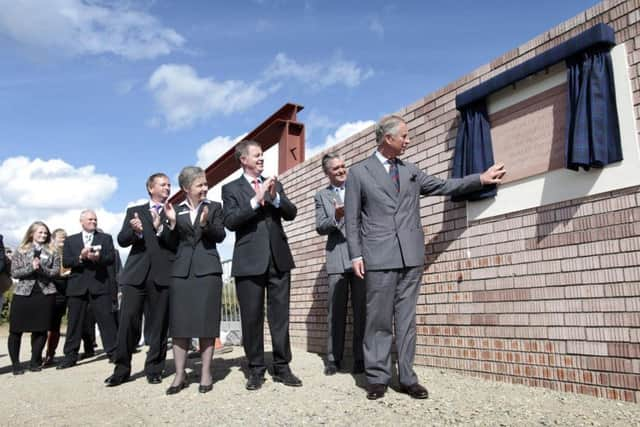Knockroon: Has Prince Charles’ dream become a folly?


The Knockroon development, endorsed by the Scottish Government as an “ambitious and inspiring” design exemplar, has been billed as Scotland’s rival to Poundbury in Dorset as a showcase for the heir to the throne’s passion for heritage-led regeneration.
But eight years after construction began on the site in East Ayrshire, a fraction of the development has been completed, with no homes built in the past three years.
Advertisement
Hide AdAdvertisement
Hide AdThe charitable subsidiary responsible for Knockroon’s construction has run up losses of more than half a million pounds for the second successive year, while the stock value of its landholdings is now worth a little over a third of what it stood at two years ago.


Now, the Prince’s Foundation has said the entire project will be “reviewed and evaluated” over the next year, leading one of Scotland’s leading architects to describe it as little more than a “construction site”.
The uncertainty surrounding Knockroon’s scope represents the latest blow to Prince Charles’s vision to regenerate one of the most deprived areas in Scotland by creating “a vibrant, sustainable community.”
Situated between Cumnock and Auchinleck, the plans for the village grew out of a 69-acre site secured as part of the £45m rescue package spearheaded by the prince for Dumfries House, the 18th century Palladian mansion.
When Knockroon’s blueprint was granted outline planning permission by East Ayrshire Council in 2011, it laid out a vision for 770 houses, 330 of which were to have been built by 2017. However, nearly a decade on from the plans being submitted, just 31 homes have been built to date.
In the most recent annual accounts of the Prince’s Foundation, published by Companies House earlier this month, the charity said it was taking time to pause and consider Knockroon’s evolution.
It states: “The development company continues to work towards making good defects and developing the infrastructure for the roads and pavements.
“Over the next year the Knockroon project will be reviewed and evaluated. Following review, a comprehensive plan of development will be presented for consideration before the next phase of work commences.”
Advertisement
Hide AdAdvertisement
Hide AdMeanwhile, the latest accounts for Dumfries Farming and Land Limited – a subsidiary of the Prince’s Foundation responsible for building Knockroon – show it employs just three people and is mired in the red.
The company incurred losses of £517,132 in the 12 months to March 2018, the steepest annual loss posted since its incorporation in 2007.
It also endured another troubled year in the 12 months to March 2017 when it lost £502,089.
The accounts also reveal that land held as stock was revalued on an open market basis by Stanley Wright, a Sanquhar-based rural property consultancy and chartered surveyors.
It slashed the land’s value from £2m to just £700,000.
The award-winning architect, Professor Alan Dunlop, described the prince’s vision for Knockroon as an “imported pastiche” which sat ill at ease in an area “blighted by industrial decline”.
He said: “The development is a curious mix of relatively expensive, faux Georgian homes dropped into a bucolic setting. The first homes were completed in 2012, and as I predicted in 2016, there is clearly limited appeal.
“There is a dearth of infrastructure and major capital work seems slow to arrive. The enterprise is reported to be incurring significant losses; is struggling to find new home buyers, and has existing purchasers apparently stuck on a building site.”
Dunlop, a fellow of the Royal Incorporation of Architects in Scotland and the Royal Society of Arts, added: “The original marketing promised heritage-led regeneration and the delivery of both a new community and improved quality of life. It has not delivered on these ambitions and its ersatz Georgian and mock Scottish vernacular creations have done little to attract industry or to inspire other volume house builders.
Advertisement
Hide AdAdvertisement
Hide Ad“This area surely cries out for authentic investment in good quality housing, which local people can relate to and can afford. Imported pastiche from past centuries is not the appropriate response.”
Gordon Neil, deputy executive director of the Prince’s Foundation, said: “The Prince’s Foundation remains fully committed to realising its vision for Knockroon. A decade has passed since the creation of the masterplan for the site, and much has changed in that time in terms of the local and wider economy.
“As in all long-term construction projects, it is incumbent on us, the developers, to remain flexible and adaptable to changing conditions throughout the build, and we will conduct a review that allows us to ensure we create a development that meets the needs of the community.
He added: “During the first two years of the second phase of the development, we will look to make significant investment into the project. The project will use the local supply chain, demonstrating investment into the local community as well as minimising environmental impact through shorter transportation times of materials
“In line with The Prince’s Foundation’s commitment to offering education and training opportunities where possible, modern apprenticeships will be offered across all trades on the development.”